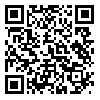Sat, Apr 26, 2025
[Archive]
Volume 38, Issue 1 (1-2024)
Med J Islam Repub Iran 2024 |
Back to browse issues page
Download citation:
BibTeX | RIS | EndNote | Medlars | ProCite | Reference Manager | RefWorks
Send citation to:



BibTeX | RIS | EndNote | Medlars | ProCite | Reference Manager | RefWorks
Send citation to:
Abdul khalek E, El-Bahnasy H A, Omar M A, Elraghy M I, Dabash T A A, Berengy M S, et al . Heart Failure and Echocardiography Derived Myocardial Wall Stress Link in Diabetic Cases with Acute Myocardial Infarction Managed by Revascularization. Med J Islam Repub Iran 2024; 38 (1) :10-15
URL: http://mjiri.iums.ac.ir/article-1-8913-en.html
URL: http://mjiri.iums.ac.ir/article-1-8913-en.html
Elshazly Abdul khalek 

 , Hamouda Abdel-Khalek El-Bahnasy
, Hamouda Abdel-Khalek El-Bahnasy 

 , Mohamad Alshahat Omar
, Mohamad Alshahat Omar 

 , Mohamed Ibrahim Elraghy
, Mohamed Ibrahim Elraghy 

 , Tarek Ahmed Ahmed Dabash
, Tarek Ahmed Ahmed Dabash 

 , Mahmoud S. Berengy
, Mahmoud S. Berengy 

 , Elsayed Abozid
, Elsayed Abozid 

 , Muhammad Saad Reihan
, Muhammad Saad Reihan 




 , Hamouda Abdel-Khalek El-Bahnasy
, Hamouda Abdel-Khalek El-Bahnasy 

 , Mohamad Alshahat Omar
, Mohamad Alshahat Omar 

 , Mohamed Ibrahim Elraghy
, Mohamed Ibrahim Elraghy 

 , Tarek Ahmed Ahmed Dabash
, Tarek Ahmed Ahmed Dabash 

 , Mahmoud S. Berengy
, Mahmoud S. Berengy 

 , Elsayed Abozid
, Elsayed Abozid 

 , Muhammad Saad Reihan
, Muhammad Saad Reihan 


Department of Cardiology, Damietta Faculty of Medicine, Al-Azhar University, Damietta, Egypt , ddr.hamouda@yahoo.com
Abstract: (1223 Views)
Background: Diabetes is associated with left ventricular remodeling. Myocardial wall stress is a measurable factor connected to the ventricular breadth and force and is related to myocardial thickness; it can be measured by echocardiography. The present study aimed to assess the link between heart failure (HF) and echocardiography-derived myocardial wall stress in diabetic patients with ST elevation myocardial infarction (STEMI) who were managed with revascularization.
Methods: This study was a comparative prospective study that took place between February 2022 and February 2023. It included 100 diabetic patients presented with STEMI and managed by percutaneous coronary intervention (PCI). Patients were selected from the cardiology departments at Al-Azhar University Hospital, Damietta, Egypt. During the hospital stay, patients were checked for HF symptoms and signs. They were also observed for 3 months after discharge for detection of HF. Those who did not develop HF were assigned to group I, and those with HF were assigned to group II.
Results: The mean value of end-systolic wall stress (ESWS) was 77.09 ± 12.22 and 97 ± 13.44, and the mean value of end-diastolic wall stress (EDWS) was 12.61 ± 2.76 and 15.87 ± 2.86 in groups I and II respectively, with significant differences between the 2 groups. The cutoff point to detect HF was 88 KPa for ESWS and 13.5 KPa for EDWS, with a sensitivity of 70% and 79% and a specificity of 80% and 61% for ESWS and EDWS, respectively.
Conclusion: Elevated left ventricle (LV) myocardial stress is related to increased HF in diabetic patients whose HF was managed by PCI after STEMI. LV wall stress is a potentially helpful risk stratification tool using routine echocardiography to determine the treatment plane according to the risk status.
Methods: This study was a comparative prospective study that took place between February 2022 and February 2023. It included 100 diabetic patients presented with STEMI and managed by percutaneous coronary intervention (PCI). Patients were selected from the cardiology departments at Al-Azhar University Hospital, Damietta, Egypt. During the hospital stay, patients were checked for HF symptoms and signs. They were also observed for 3 months after discharge for detection of HF. Those who did not develop HF were assigned to group I, and those with HF were assigned to group II.
Results: The mean value of end-systolic wall stress (ESWS) was 77.09 ± 12.22 and 97 ± 13.44, and the mean value of end-diastolic wall stress (EDWS) was 12.61 ± 2.76 and 15.87 ± 2.86 in groups I and II respectively, with significant differences between the 2 groups. The cutoff point to detect HF was 88 KPa for ESWS and 13.5 KPa for EDWS, with a sensitivity of 70% and 79% and a specificity of 80% and 61% for ESWS and EDWS, respectively.
Conclusion: Elevated left ventricle (LV) myocardial stress is related to increased HF in diabetic patients whose HF was managed by PCI after STEMI. LV wall stress is a potentially helpful risk stratification tool using routine echocardiography to determine the treatment plane according to the risk status.
Type of Study: Original Research |
Subject:
Cardiology
Send email to the article author
| Rights and permissions | |
 |
This work is licensed under a Creative Commons Attribution-NonCommercial 4.0 International License. |





